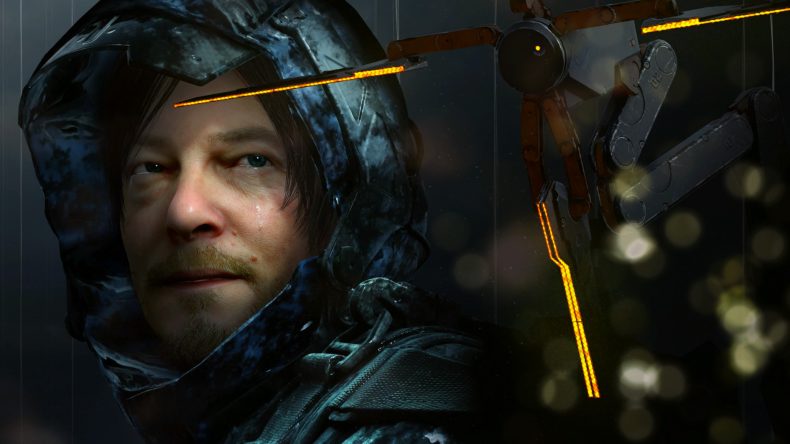November 8, 2019
Even now, after finishing Death Stranding, I can’t quite believe it’s all over. The bizarre trailers that made no sense at the time; the social media posts; gameplay videos that slowly showed exactly what the game would feature, and every spoonful of information all finally accumulated into something real: Death Stranding is a remarkable game. There’s so much to say about it, and it’s not perfect, but one thing I cannot stress enough is that Hideo Kojima is one of a kind. Nobody can craft such a unique story and tell it in the same way that he can, with an ability to offer truly magnificent moments that blow you away, and give you an ending that will leave you thinking about it long after it’s over.
But what actually is Death Stranding? I expected a lot of variety in mission types, but it all kind of boils down to one simple thing: deliver the package, and connect the world. I never really thought about this until the game was over, but fundamentally, you’re taking cargo and delivering it to people across a world in need – ruined by the Death Stranding event – trying to rebuild a country that once stood as one of the world’s biggest powers. It’s not quite as simple as that, but that’s the gist. It is how you do this and how you choose to approach each mission that makes up the meat of your journey. Some people you encounter, like the Elder, won’t agree to join the United Cities of America (UCA), but he may provide equipment to help you. When you do connect with another Prepper, distribution centre, or city that does want to connect with the UCA, you’ll unlock everything in that region built by other real world players.
You’ll find lots of different structures that others have built available for you to use, and these are absolutely vital in your survival. Generators will help recharge your Skeleton Suit, truck, or motorbike. Timefall Shelters will keep you out of the degenerative rain and wait until it goes away, and Safehouses allow you to fully recover. Additionally, players may have built a bridge that allows you to cross over impassable areas, or spawned a Postbox where you can store and collect lots of useful items. Ladders and climbing anchors may also be scattered around connected areas, as well as vehicles and signs providing useful information. You can also build these structures providing you have the right materials on you, and you’ll receive likes for your contributions which help to level you up.
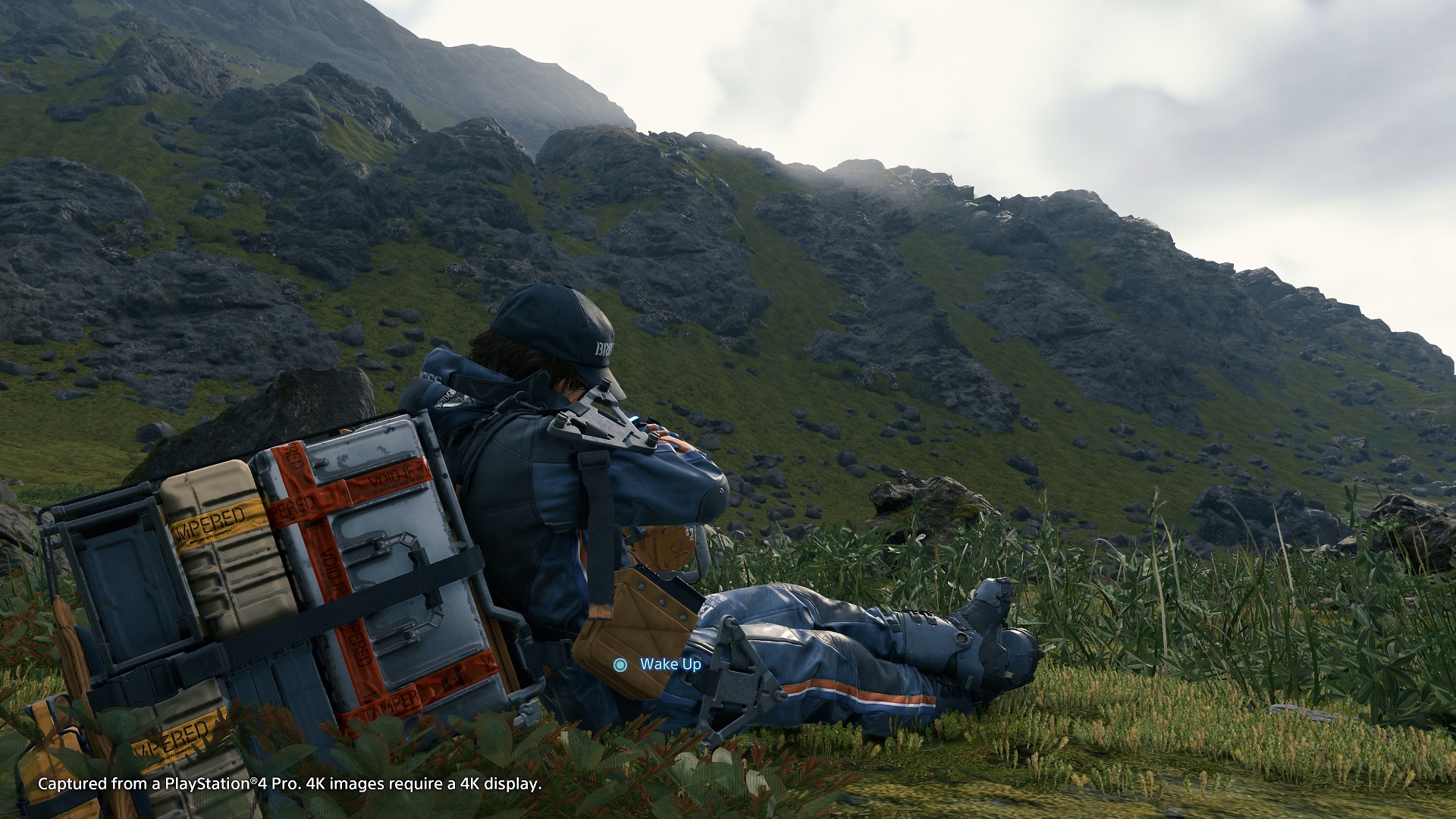
You don’t get skill trees or ability points, or anything like that, but the better your ranking the better you become as a Porter. Other players can give you more likes, better jobs become available, and you’ll be much more acclimatised to the tougher biomes you’ll find yourself passing through. Likes are a cool way of connecting with other players, too. Acknowledging others hard work (because building is hard work) makes you feel happy to contribute. You have to carry metals, resin, special alloys, and other materials with you to be able to build, so these structures can’t simply be built from entering a menu and pressing a button. Players can also contribute to the world simply by travelling through the same routes in their own game. If enough players walk the same route, the terrain will form a kind of dirt path that makes it safer to travel through when you’re next there. Also, you can build highways that become vital for smooth and safe travels, but these take up a lot of resources and time, so it all depends on how much time you want to give to resurfacing the UCA with shiny new roads.
The terrain in which you travel across can be brutal. Rivers that can sweep you off your feet, treacherous mountain ranges where boulders can knock you on your ass, snowy peaks featuring horrific snow storms, rock formations that can only be approached on foot, and deep crevices that can’t be crossed without the right equipment. Sometimes you’re travelling for long periods of time, and factoring in the best route to take before setting out is vital to both a safe journey and undamaged cargo. With every delivery you make you get ranked, and your score depends on a number of factors, such as the speed at which you make the drop and the amount of damage the cargo has taken. I won’t lie, these journeys can be hellish. Forget the toughest boss in Dark Souls – these are the epitome of cruelty – and my biggest frustration with Death Stranding. Not every one is an utter pain, but some will leave you reeling.
If you fall when carrying cargo, it can become damaged. Certain packages can’t be submerged under water. Others are fragile, so must be carried by hand. As you progress through Death Stranding, it will become easier, though. You’ll unlock the floating carrier which can be loaded up with cargo, power skeletons that improve the amount you can carry, and trucks you can load plenty of stuff onto, but you won’t be able to drive across certain areas due to the uneven terrain, so constant micromanagement is key to making sure you get to where you want to go safely. This becomes quite a chore, especially when you make a call to do it on foot (because you may only be travelling a short distance), only to find you’re having to use L2 and R2 to repeatedly balance your weight.
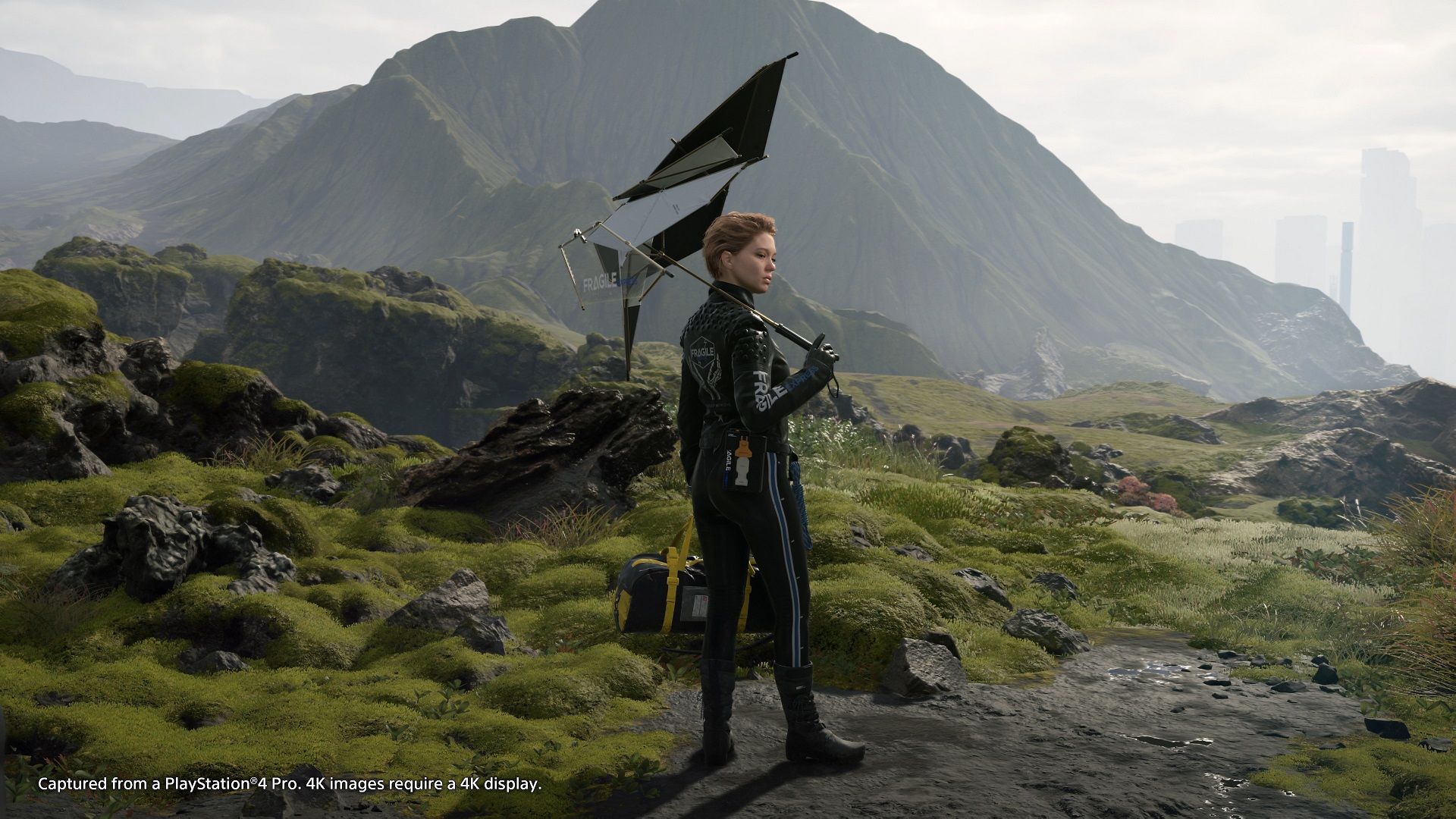
A lot of the time you’ll start to lean to one side because the weight’s momentum is causing you to do so. If you run down a hill too fast or trip over a rock, you have to make sure you don’t lose your balance, so using the triggers is something you have to do constantly. It’s not so much a pain when readjusting over relatively flat surfaces, but making your way across uneven mountain faces or rocky terrain with the potential to trip at any moment becomes incredibly frustrating. Tripping over will cause you to drop your cargo and, in turn, damage it, so I’d have much preferred balance just being an automatic thing instead of you having to manage that on top of everything else.
One of your greatest tools is your Odradek (a Franz Kafka character comprised of tangled threads, FYI), and it helps you to scan terrain and see how dangerous certain areas can be. It gives you blue, yellow, and red warnings that allow you to cross over safer avenues, with blue being the safest and red being an absolute no go. Using the Odradek to cross rivers is so important because if you even attempt to move through red areas you’ll be swept away as will your cargo, and losing it this way means it’ll be swept much further away leaving you with little chance of getting it back.
The Odradek is connected to your Bridge Baby (BB), and it also becomes a tool to detect BTs (Death Stranding’s supernatural enemies) when out in the field. Timefall is a weather cycle that manifests in the form of heavy rain or snow, and if you start to see a downpour, it means that BTs aren’t far away. Timefall can also damage your cargo, so there’s yet another way for your deliveries to suffer a lower ranking. Whenever you see your Odradek go crazy under the Timefall, it instills a sense of dread, and for the first ten hours or so, it’s genuinely terrifying. Floating ghost-like creatures hang in the air, and you must pass by them without alerting their presence. Remaining silent means they won’t be alerted, but you’ll need to crouch and hold your breath for this or else they’ll come for you.
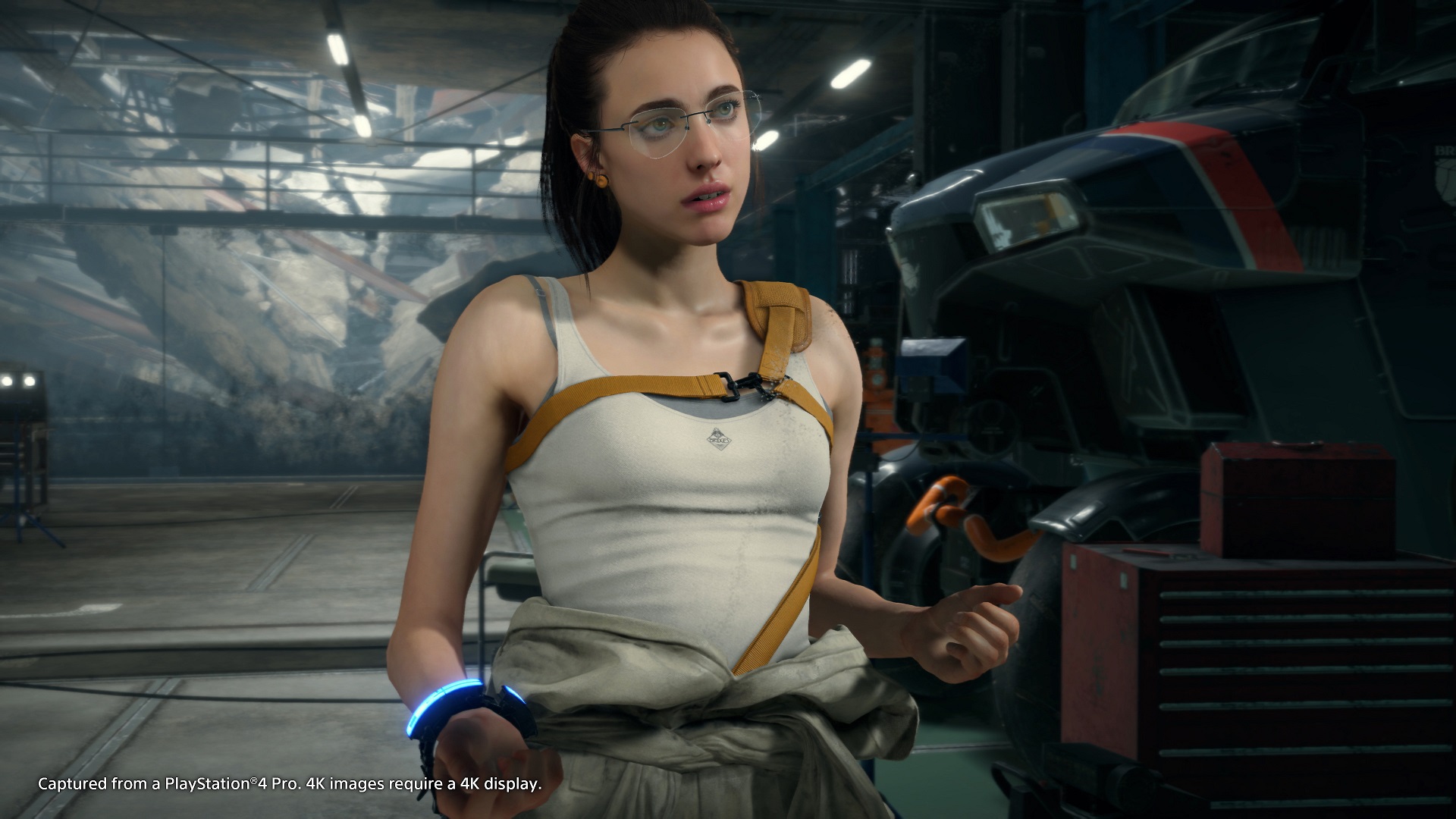
Sam’s blood has special properties for fighting the BTs, and you’ll eventually be able to use anti-BT weaponry to dispose of them. If they do find you, a tar-like substance appears, and moaning creatures emerge from it and grab you, attempting to pull you in. You can shake them off, but you may drop all your equipment, and if you aren’t successful they’ll drag you off into a hellish battle against a tar-soaked monster that’ll do all it can to kill you. Buildings will sink, as will anything within the vicinity, and deciding whether or not to fight them or not all depends on whether you’ve got a healthy arsenal. These moments are beautifully staged, but can be avoided as long as you play it safe.
Impatience plays a big role in whether or not you’ll evade the BTs, and Kojima and his team knows this. When all you want to do is get to the next destination without interruption, you’ll more often than not try and escape an impending BT attack. However, clumsiness and ignorance will just cause your downfall. They’re an amazing enemy, but when you’re making long journeys and BTs show up at the end… death at the hands of them is so, so frustrating. Thankfully, by pressing the touch-pad whilst in these fights, you’ll call other players to throw equipment to you such as grenades and guns, so you can get a bit of extra help when fighting these behemoths.
Your other enemy comes in the form of Mules, and they’re marauders that prey on the other Porters of the world. There are zones they reconvene in, and if you pass through their area they’ll try and steal your stuff. They’re represented by orange outlines on the map, and if they find you, be prepared to either run or fight. You’ll gain the ability to fry their signal so they can’t locate you, but if you find that they’re onto you, making an escape can be tricky. I love the mules: they’re humans who were once Porters like you, but in time went a bit mad, and earlier on they’ll use stun tactics to stop you. Eventually they’ll use deadly force in the form of assault rifles and grenades, and you can choose to evade them (which is often the best strategy), or take them all out. The Bola Gun is a unique weapon that fires an electrified cable at them to temporarily paralyse, and you can also use stun grenades.

Their camps are full of other cargo and equipment collected from other players, and you can choose to loot them or leave them. If you end up killing Mules, the BTs can take over their souls and become an even greater threat to you, so the decision to use deadly force also factors into whether or not you want more BTs on your tail. Sam is not a soldier, so you never truly need to pull the trigger. It gives Death Stranding an interesting dynamic and means that if you wanted to take your time and play stealthily, you could. It means that you’ll be able to get from A-to-B without losing any cargo or life, but it just depends on how patient you are.
Cargo management also plays a significant role when deciding on how much blood you carry with you on any given mission. Health is regained by connecting a new blood bag to you, but not only is it a source of health, it also laces your ammo with blood, which is hugely affected against BTs. You can find blood bags in the field, but making sure you’ve got enough at the start of a mission is a key element to each journey. Your map is incredibly useful, even if it does become a tangled web of route plans and icons. Weather patterns become available showing you where Timefall is present, and how long it may stay in one area. You can also plan your route by connecting waypoints to your destination, and by using the touchpad you can rotate the map to show mountainous zones and tricky areas to get around.
Outside of the map and in the game, by holding L1 you can use view destination points, as well as checking on BB to see if they’re OK. Certain exposure to BTs, or falling over too many times can upset them and cause them to go into shock, and once this happens they’ll not be able to detect BTs. Taking time to rock your controller from side to side in order to relax them, or playing in a Hot Spring with them makes them happy again, as does travelling to your Private Room. I became emotionally invested in BB throughout, and often found myself doing whatever it took to make sure they were OK. Hearing them laugh or cry through the controller never became annoying, it only highlighted my need to keep them safe. Death Stranding is all about making connections – whether through other players, your BB, or uniting the UCA, and it’s also a social commentary that shows just how important our connections with one another are.
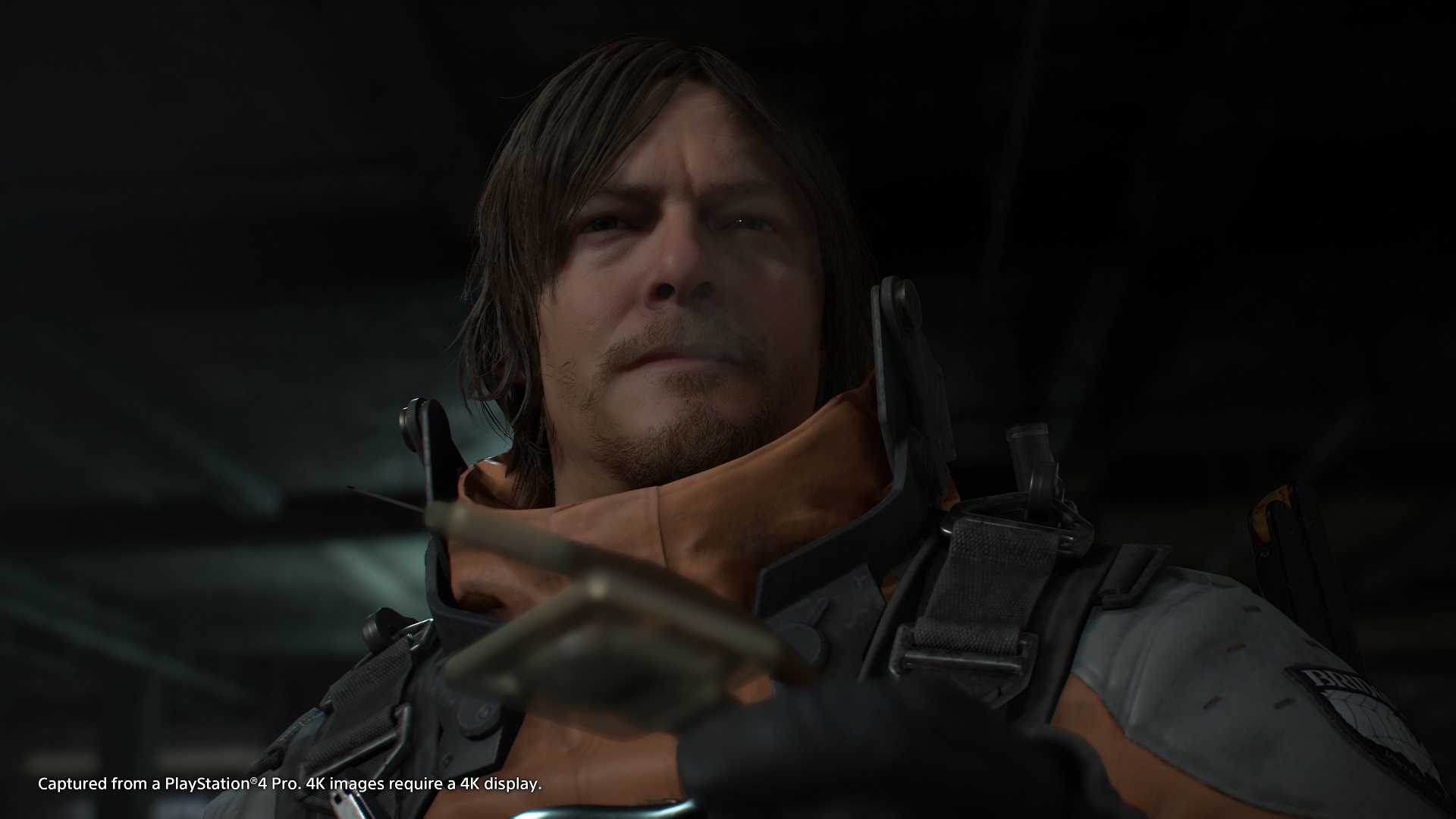
You’ll spend a lot of time in your Private Room, and these moments of reflection and relaxation are important to Sam in a number of ways. Once you enter a Private Room all your vitals are restored, such as your health and stamina. Your equipment and vehicle’s batteries are also replenished, and an amount of your blood is extracted, too. Sam can also take a shower, relieve himself with a number one and two, and by doing this gives you grenades to use in battle. Heartman is the UCA’s smarty pants, and he lets you know early on that the components found in your bodily fluid can be used to make some pretty sweet weapons – who knew?
BB will also be returned to full working order, and you can have a few beers and eat some bugs if you’re feeling peckish. You can read emails from all of the characters you connect with, check orders you’ve undertaken, and listen to music you’ve unlocked. Eventually fast travel is unlocked, but by doing this you won’t be able to take any cargo with you. Time in the Private Room isn’t always necessary, but using these moments to play around take away the frustrations of making consistently long journeys. Also, they give you time to regroup and read the copious amounts of interviews you’ll be able to read, all giving you plenty of information about the Death Stranding.
Hideo Kojima is renowned for writing some of the most out-there stories ever seen in video games, and whilst Death Stranding is certainly ambitious when it comes to the game’s plot, it makes a lot of sense, and constantly introduces some fantastic set pieces. It is both bombastic and sentimental, reflecting on a world lost after a cataclysmic event, and how those left in its wake try to rebuild a fallen America through friendship and connection. When it comes to the action and science fiction elements, Kojima gets it 100% right. The cutscenes are a thing of beauty, from the flashback sequences to the all-out blockbuster moments. Mads Mikkelsen is by far the game’s stand out star, both in character and acting, and his reasoning for doing the things he does are both relatable and terrifying.
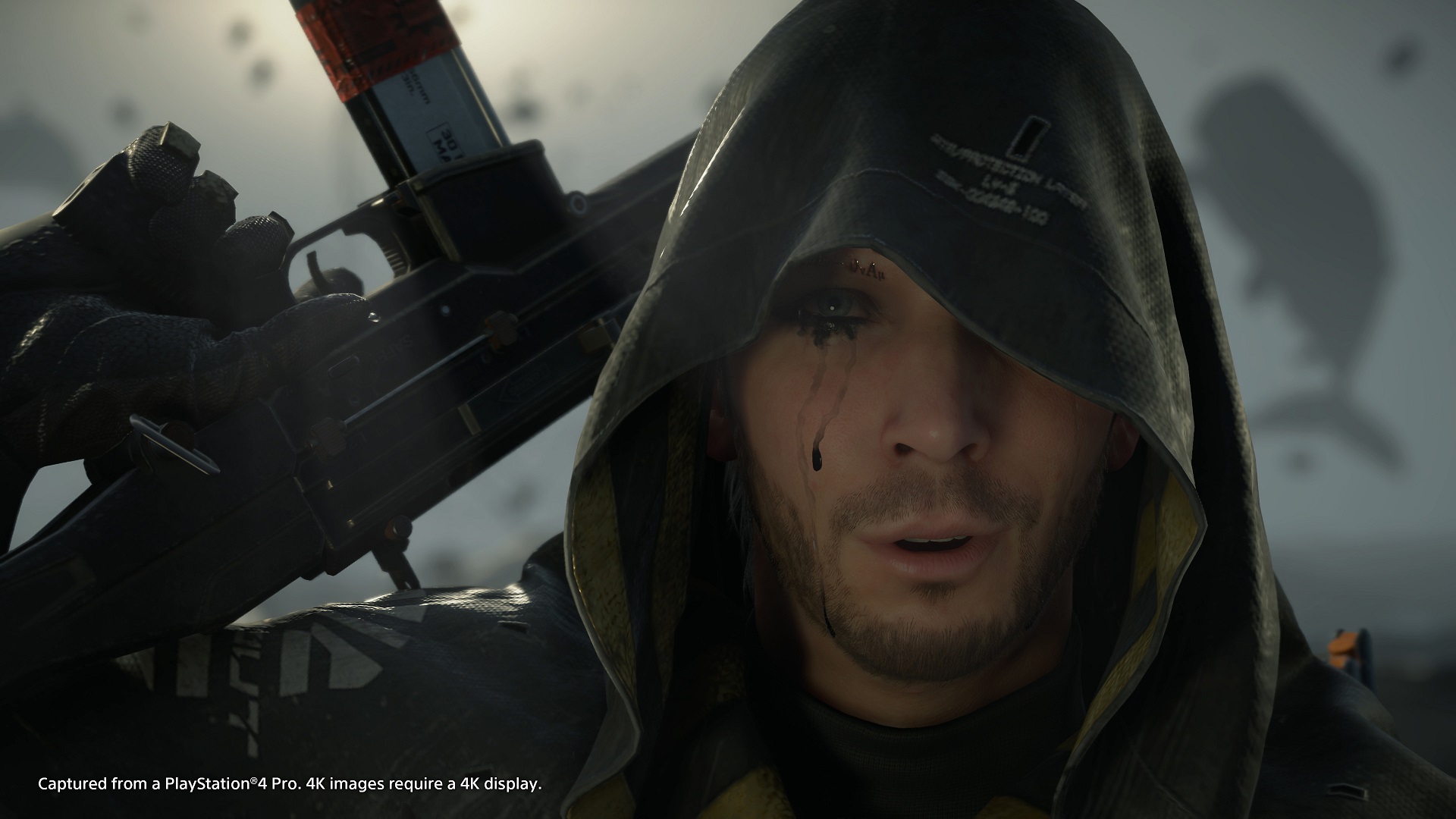
There’re many twists and turns in Sam’s story, and every single character provides great exposition for what Kojima’s message is, even when it feels certain conversational scenes are long-winded. Norman Reedus plays the working man hero so well, from his incredulity in the UCA to his understanding of the importance of friendship and connection the further you get. His relationship with BB also builds at a great pace, and the emotional bonds you make as the story progress is subtle, but can also leave you speechless. Death Stranding had me in tears a few times, but as the credits rolled I was an utter mess. The story left a huge impression on me, and I’m still thinking about it even now.
The supporting characters are all excellent, too. Troy Baker’s Higgs is a huge presence; both terrifying and hauntingly understated. Fragile is played wonderfully by Léa Seydoux, becoming a close friend to Sam, and you end up empathizing with her as you learn more about her story. Guillermo del Toro’s Deadman is also a stand out character who has his own mental journey throughout the game that you’re equally invested in. Perhaps the best of all, though, is Mama. The way in which her story opens up is quite honestly breathtaking and equally heart-wrenching. Margaret Qualley does a fantastic job of making you fall in love with her, and I found myself drawn to her charm and sweetness from the beginning.
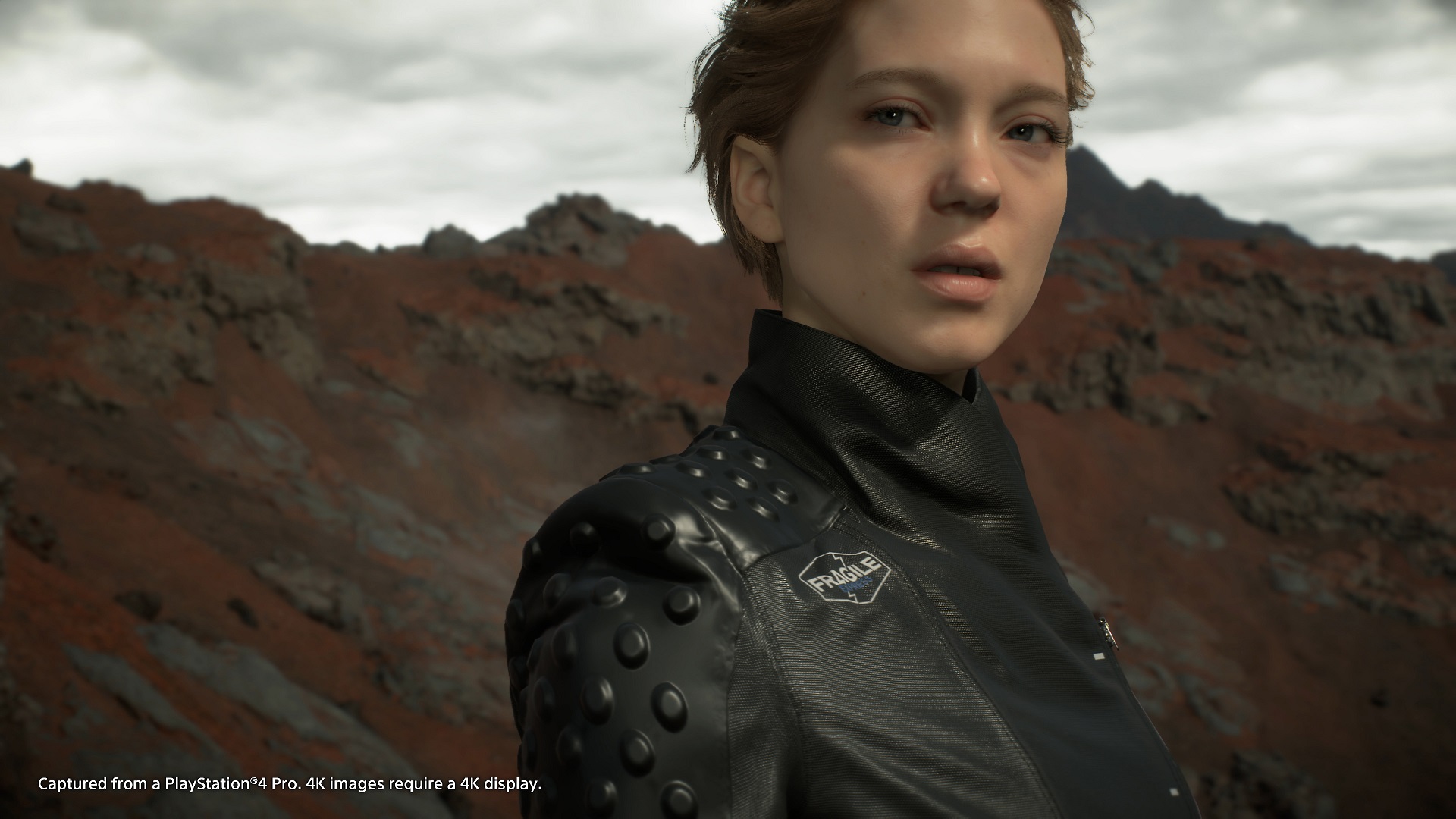
Death Stranding has a lot of other characters whose stories take place over the course of main and side missions, and even in these Kojima has put a lot of effort into telling. In one mission, you reunite a couple who have been lost since the voidouts. The genius, though, is that when you finally manage to do so, their story continues through various emails in its wake, and it’s amazing that this amount of effort even exists. But that’s what Death Stranding is. There has been so much time and effort put into every facet of it that you can’t quite believe the level of detail on offer. From the cargo management to structure building, the story to the strand elements, Death Stranding is a behemoth of a game.
It’s also easily one of the best looking games on the PlayStation 4. Character animation is stunning in the cutscenes, and the landscapes are phenomenal. Natural occurrences like the Timefall and rockslides are breathtaking, and Kojima’s direction becomes a dream to watch. The soundtrack is perfect, from Low Roar’s folk-infused chillout tracks to Ghost Poet’s haunting musical epics, I can’t praise it enough.
Death Stranding is an ambitious game, featuring so many different systems and ideas, but it never falls under the weight of them. Whilst journeying across a crumbled America can be hugely frustrating at times, I never got bored of it, and through the powerful story, tense gameplay, and amazing action sequences, this will go down one of Kojima’s best. Taking time to build the necessary structures and adapt to the terrain is time consuming, but making sure you’re prepared will make your experience a much better one. Fabricating tons of cool equipment is exciting, especially when you earn the ability to build something new, and the message of connecting people provides an important backdrop for a wonderful game.
Incredible story and superb acting
Huge variety in equipment
Great audio and visuals
Lots of great mechanics
Travelling long distances is frustrating
BT encounters lose impact
Balancing can be a pain
Death Stranding is an ambitious game, filled with so many different mechanics and ideas that almost always work well together. The story and acting is fantastic, and its visuals are a thing of beauty, not to mention the powerful soundtrack.


